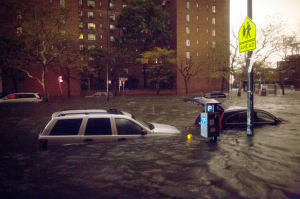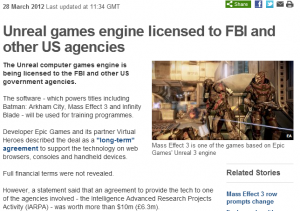It was not our imagination. It actually happened.
Yes, a year ago at this time Hurricane Sandy hit the NY/NJ region and left in its wake damaged homes and buildings, displaced families and businesses, and major disruption to business as usual.
This year children will go out trick or treating and (hopefully) stop thinking that this unofficial holiday of Halloween is routinely rescheduled, what with the storms of the last two years. Life has returned to normal for most of us. However, for some of us it has not, and there is now or will be a “new normal”.
And so what are the lessons learned, and are we better prepared than we were before? While we have made and still are making great efforts to better prepare our communities and the region as a whole, the simple answer is we don’t know conclusively until the next major disaster event whether we are adequately prepared. Emergency management and its major component, preparedness, are a process of continuous improvement, and so, with that understanding, we must always look to the lessons of the past, always look to step up our game, and always be prepared at the household level, community, and greater regional community as a whole.
From Thursday through till Sunday I worked to help get NYC prepared to shelter thousands of residents. More on that later, but for now all I can say is that I am stunned. For those who know the nature of my work this is what we have been planning and preparing for, and for those who don’t during the past 5 years I have been Project Director for Coastal Storm Plan Training, and we trained over 25,000 City worker for their responsibilities in staffing the network of Evacuation Centers, Hurricane Shelters, and Special Medical Needs Shelters.
The statistics (so much for them now) bear out that the probability of a major coastal storm (around a Cat. 1 or higher) hitting the City of New York in any given year is about 7% or less or once every 52 years. We have had two back to back, this one far worse and a true Cat. 1 storm.
I can only say that I am stunned. For all of the scenario building, simulations, and story-line based training that we have developed at CUNY SPS for NYC OEM, I am still a little overwhelmed at seeing the devastation. I know what it looked like from past hurricane events (1812, 1893, 1938, and even 2011 with Irene [technically a Tropical Storm when it reached NYC]; sorry but Donna was a tropical storm by the time it reached NYC), but it is truly surreal for me seeing how widespread and damaging the flooding has been, and will continue to have an impact on our area. I am well informed on the plans and efforts for clean-up and recovery. That work begins soon.
Watch this video, a compelling idea on why the social and management skills gained through World of Warcraft (a massively multi-player organized role play game or MMPORG) can be a better model for learning business management. Guilds are self organizing teams, and leading a guild has its corollary in the real world.
[youtube]http://www.youtube.com/watch?v=BhuOzBS_O-M&feature=player_embedded#![/youtube]
Make a compelling case for exploring the passion, self-motivation, and self-organizing and regulating principles of virtual environments.
Just look at what the FBI licensing a game engine
Listen to my colleague Anders Grondstedt talk about 3D learning, gamification, and story telling for learning.
https://traininginsights.conveycontent.com/y/VvwSM
Federal Consortium for Virtual Worlds 2012 Conference
Closed Published May 24th, 2012 in UncategorizedThis year I managed to set aside time, travel inworld (in Second Life- all of a few inches fro my desk) and attend the first half of the Federal Consortium for Virtual World 2012 Conference held physically in at National Defense University in Washington, DC. In 2010 I attended virtually, and in 2011 not only attended, but also presented (see http://youtu.be/QGz18l7BVZE).
It is a great event, and I wish I had the time to be there physically, but hey that’s what virtual worlds are for!
Some good roundups of this year’s sessions:
http://www.govloop.com/profiles/blogs/fcvw-2012-conference-keeping-up-with-the-future
http://gov.aol.com/2012/05/21/strides-in-virtual-worlds-point-to-real-world-benefits-for-agenc/
BTW- you can see a great pic of my friend and colleague Robert Daniel, doing his mind meld with the computer- scary stuff kids using that sensor on his head he can move objects!
So, some new things I learned this year-
From Jessie Schell– “we will develop a relationship with our avatars”. Think about this next time you are talking with a virtual voice (over the phone or with a character) in delight or in anger.
From Randy Hinrichs– “Virtuality” The idea that the virtual world, real world, can be blended as a form of augmented reality.
Related to this, James (Jim) Blascovich, c0-author of Infinite Reality, gave a talk on why virtual reality (including virtual worlds) are perceived as real and impact behavior and cognition (learning); what the mind sees, it believes.
I was asked recently of the learning applications of virtual worlds…ultimately they are somewhat limitless although at the end of the day there is still some training that requires physical conditioning and fine tactile, multimotor skills, e.g. firefighting, learning to snowboard, etc. On the other hand, virtual worlds allow training in environments that would be far too dangerous or labor intensive: dealing with a nuclear plant accident or shutting down an oil refinery.
Venture into any publicly accessible virtual world platform and you can find a diverse universe of applications. to learn more: join the FCVW, journey into Second Life, or see my recommended books on the subject.
The Hurricane Irene simulation continues….
————————————————————————————————————————————————-
Alert issued 10/6/11 at 8:00 AM. Mayor Bloomberg has ordered a MANDATORY EVACUATION of Zone A citywide and the Rockaway Peninsula. All or part of your zip code is under an evacuation order. Please refer to OEM’s Hurricane Evacuation Zone Finder at http://gis.nyc.gov/oem/he/index.htm. You may also contact 311 to find out if you need to evacuate.
The sender provided the following contact information.
Sender’s Name: Notify NYC
Sender’s Email: [email protected]
Sender’s Contact Phone: 212-692-9175
The Hurricane Irene simulation continues….
You watch the following Newscast. Hurricane Irene appears to be bearing down on NYC. You and some of your staff assigned to the Coastal Storm Plan receive a second notification that you will be deployed in the next 48 hours to an Evacuation Center.
How do you prepare yourself and your family?
The Hurricane Irene simulation continues….
This past Sunday you receive a call from your elderly mother (87 years old) who lives in Far Rockaway- see http://t.co/jQRlm5ir -She normally has a home healthcare aid who checks in on her 3 times a week, but otherwise she is somewhat self sufficient. She is worried about the coming storm, but her neighbors, many of them immigrants who have never experienced a severe storm in NYC tell her that they plan to stay.
What do you tell her?
You and several of your staff receive notifications via NotifyNYC like the following:
BEGIN MESSAGE
————————————————————————————
SWN-Alert issued 10/4/11 at 8:00 AM. Mayor Lewis has activated the Coastal Storm Plan.
You are being notified as you may be asked to report to an Evacuation Center.
Please reply to this message if you are available. If you are available to report to an
Evacuation Center then reply with a 1. If you are not available, then reply with a 2.
Please refer to OEM's Hurricane Evacuation Zone Finder at http://gis.nyc.gov/oem/he/index.htm.
You may also contact 311 to find out if you need to evacuate.
The sender provided the following contact information. Sender's Name: Notify NYC Sender's Email: [email protected]v Sender's Contact Phone: 212-###-9175
————————————————————————————
END MESSAGE
Several of your staff tell you they have plans this weekend. Others say they have kids at home that they need to take care of, and as single parents, they cannot leave them for long with other family members. You yourself have your own children at home, but your husband will be at home this weekend which will free you up if you are called upon.
What do you tell your staff?
Follow this simulation on Twitter at #irenesimulation or check back here later this week.
Join this serious game, a.k.a., simulation, as we put you in the role of emergency responder.
Anders Gronstedt and I will be conducting a live demonstration of NYC’s Hurricane Shelter Simulation course in-person at the North American Simulations and Gaming Association this Thursday, October 6 at 10:30AM.
Simulation begins below…..
———————————————————————————————————————
Hurricane Irene is due to make landfall next Saturday. Watch this report
You live in Breezy Point, NY and work for the New York City Department of Housing Preservation Development
Are you ready? Watch the video: what would you do to get your household ready? What steps will you take to alert your organization, your staff?
Come join our demonstration in Second Life and get ready for a role of a lifetime.
Follow us on Twitter at #irenesimulation or check back here later this week.
A documentary is coming out called Connected, about the degree to which we are connected through technology, its impact on our lives, and the degree it has changed human relationships. Check the trailer out http://youtu.be/rUBjnk_9n8Y
Can’t wait to see it.
Now this conjures up an extremely relevant issue for training (corporate, mandatory, etc.) and education as a whole and that is one of attention, motivation, and attitude of both the instructor (trainer, teacher; call them what you will) and the learner. Do we have your attention? or is it divided from the lesson, the lecture (Ugh!), or exercise.
This goes back to my original blogpost on Information Ubiquity. Further to this, it is not just the plethora of content we are exposed to but the human connections, with friends, families, colleagues that we want to keep up with on Facebook, Twitter, LinkedIn, YouTube, etc.
Which all leads to me to my pitch in how we might address it: through @-It-Tude. Keeping the learner, ourselves, and our teams At-It: at the task, at attention, and actively learning and pursuing their goals rather than being unproductively distracted.
So here is my open ended inquiry out to the universe:
Tell me how you focus yourself and your learner’s attention in an over-messaged world
You can join the conversation by replying here, to a Twitter conversation using the hash tag #learningattitude, or at Facebook.







